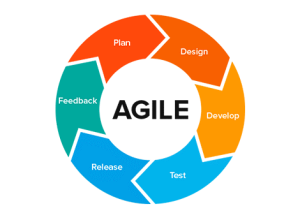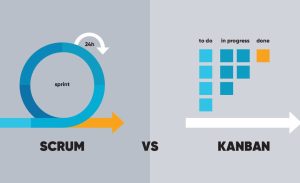Agile Development in Action: Project Management Insights
Introduction In the ever-changing world of software development, flexibility has become a cornerstone concept. Agile methodologies have revolutionised the way development team...

Introduction
In the ever-changing world of software development, flexibility has become a cornerstone concept. Agile methodologies have revolutionised the way development teams approach projects by offering flexibility, adaptability, and a focus on delivering value to customers. In this article, we’ll delve into the essence of agile development, explore its application in real-world scenarios, and identify its impact on project management.
Understanding Agile Development
Agile development is a way of thinking that emphasises iterative, incremental progress, and collaboration among cross-functional teams. Unlike traditional waterfall models, in which the entire project is planned in advance and executed sequentially, Agile welcomes change and feedback throughout the software development life cycle (SDLC).
In Agile, the SDLC is divided into small, manageable iterations or development cycles, commonly known as sprints. Each sprint typically lasts between one and four weeks, during which development teams focus on delivering a set of features or functionality. This iterative approach allows for rapid prototyping, faster feedback, and continuous improvement.

Role of Development Teams
Development teams are the heart of Agile projects. These teams are cross-functional and include members with different skill sets, such as developers, designers, testers, and product owners. Collaboration and communication are paramount: daily meetings and regular retrospectives promote transparency and accountability.
Agile Development Approach to Software Applications
Agile methodologies are well suited for developing software applications of varying complexity. Whether it’s a web platform, mobile app, or enterprise software, Agile enables teams to effectively respond to changing requirements, market dynamics, and user feedback. By prioritising customer value and delivering working software incrementally, Agile minimises risk and maximises ROI.
Scrum and Kanban are two popular Agile methodologies widely used in the industry. Scrum, characterised by time-bound sprints and prescribed roles (e.g. Scrum Master and Product Owner), provides a structured framework for managing complex projects. On the other hand, Kanban emphasises workflow visualisation and limiting work in progress, ensuring a continuous flow of tasks and allowing teams to iteratively optimise their processes.

Agile Development Project Management
Agile project management revolves around facilitating collaboration, promoting self-organisation, and empowering teams to make decisions autonomously. Project managers in an Agile environment act as servant leaders, removing obstacles, facilitating discussions, and ensuring alignment with organisational goals. Tools like Agile boards, burndown charts, and retrospectives help you track progress, identify bottlenecks, and drive continuous improvement.

Conclusion
Agile development is not just a methodology; it is a mindset that values people and collaboration over processes and tools, collaborating with clients in contract negotiations, and responding to change over following a plan (as stated in the Agile Manifesto). By leveraging agility, development teams can confidently navigate the complexities of modern software projects while delivering value to stakeholders and delighting end users. As technology continues to evolve, agile development will remain a guiding light, enabling innovation, adaptability, and success in the rapidly changing world of software development.